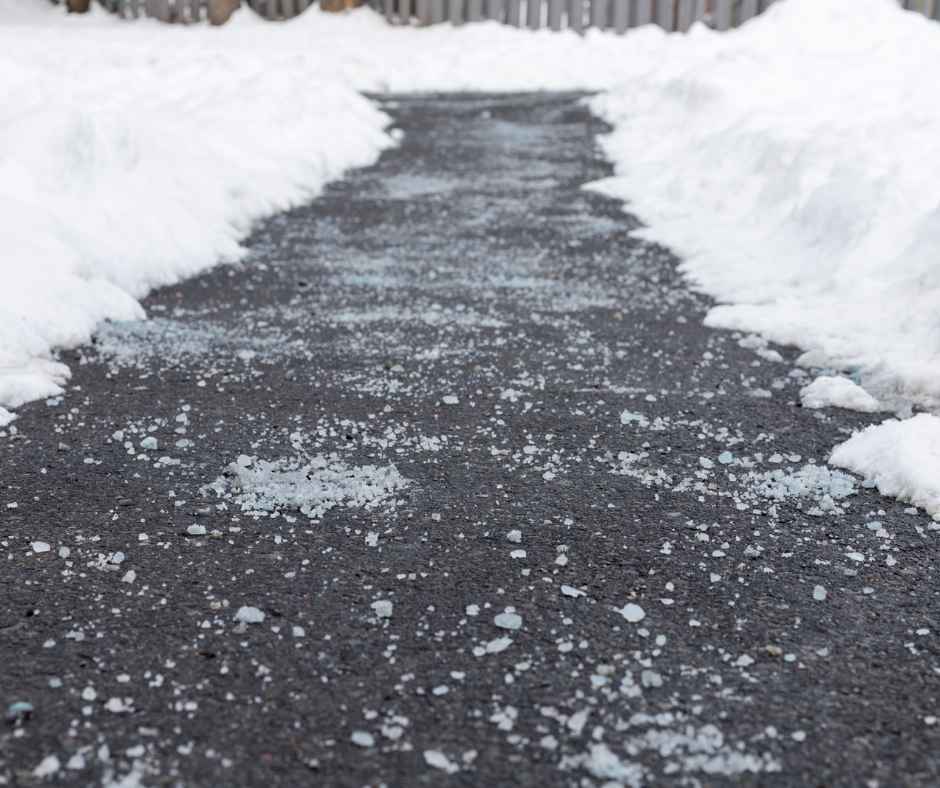Ice Melts Help But Can Be Harmful
Return to Winter Lawn Agent Articles

Although freshly fallen snow is beautiful, it brings with it patchy ice that can be hazardous for walking and driving. Beside shoveling and chipping the ice, we often look for other tools to aid in melting the winter precipitation. Several products on the market, commonly referred to as ice melts or de-icers, can be useful in our battle with old man winter.
Ice melts or de-icers
These products can be very effective if used correctly. But if they are overused or misapplied, they can damage the concrete, as well as nearby plant materials, including the lawn and shrubs.
There are five main materials that are used as chemical de-icers:
- calcium chloride,
- sodium chloride or salt,
- potassium chloride,
- urea and
- calcium magnesium acetate.
Calcium chloride
The traditional product that has been used is calcium chloride. It will transform ice into a slippery, slimy surface. This product is effective to about minus 25 degrees. Plants are not likely to be harmed unless excessive amounts are used.
Sodium chloride or salt
Salt is the least expensive material available. It is effective to approximately 12 degrees but can damage soil, plants and metals.
Potassium chloride
Potassium chloride can also cause serious injury when washed or splashed on foliage. Both calcium chloride and potassium chloride can damage the roots of plants.
Urea
Urea is a fertilizer that is sometimes used to melt ice. It is much less corrosive than salt but it can still contaminate ground and surface water with nitrates. Urea can damage plants if overused. It is effective to about 21 degrees.
Calcium magnesium acetate
Calcium magnesium acetate or CMA is a newer product that is made from dolomitic limestone and acetic acid, the main compound found in vinegar. CMA works differently than other materials in that it does not form brine like salts, but rather helps prevent snow particles from sticking to each other on the surface. It has little effect on plant growth or concrete. The product works best when temperatures remain about 20 degrees.
De-icer Damage
All of these products are acceptable for use. Limited use of any of these products should cause little damage. Problems accumulate when they are used excessively and there is not adequate rainfall to wash or leach the material from the area. It is still best to remove the snow and ice by hand when possible and spot treat with the ice melts, thereby using lesser amounts.
If damage from de-icers is going to occur, it will not be noticeable right away. Problems are uncovered in the spring when the plants and grass along the walks are dead. At that point, there is no remedy for the winter problem.
Have questions? The Garden Hotline is staffed by trained EMG volunteers and Extension staff who will assist you with questions.
Phone: (913) 715-7050
Email: garden.help@jocogov.org